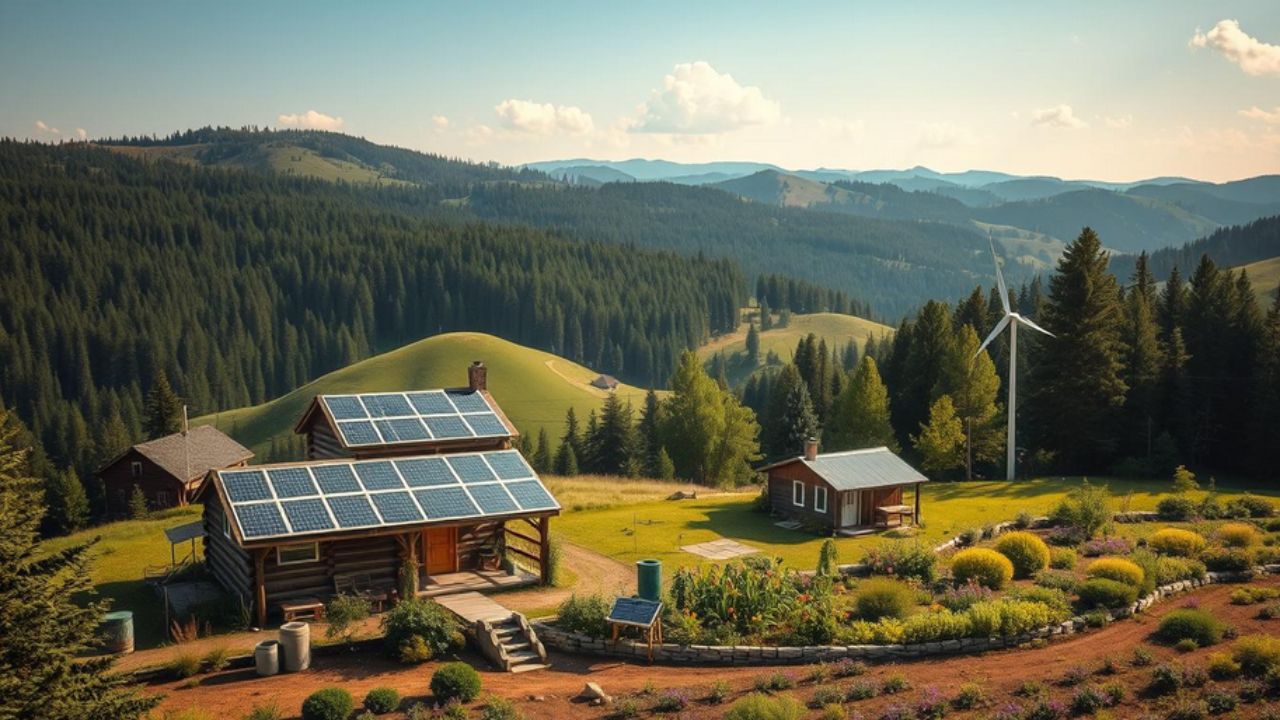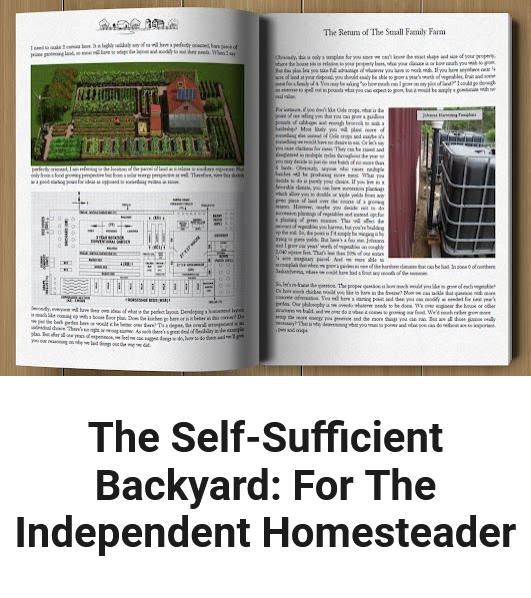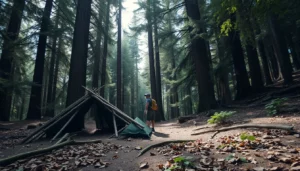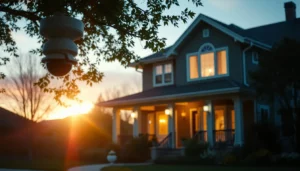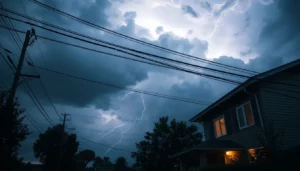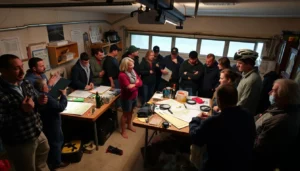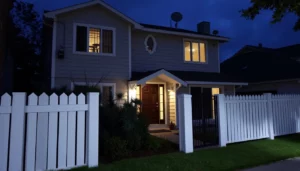Ever thought about what states allow off grid living in america?
It’s a question many people are asking these days as more seek freedom, privacy, and a simpler way of life.
In recent years, off grid living has become a growing trend.
It’s not just about living disconnected from the power grid; it’s about taking control of your own resources and living independently.
For some, it’s a way to get back to nature, while for others, it’s a step towards self-sufficiency and sustainability.
The good news is that technically, off-grid living is legal in every state across America.
However, the rules and regulations around it vary widely from one state to another, and these can have a huge impact on your off grid journey.
In some states, you’ll find it easy to set up an independent lifestyle, while in others, strict laws and off grid living restrictions can make it incredibly difficult.
There are about 15 states in the U.S. that are considered off-grid friendly.
Among these, Missouri and Texas stand out as the best options. They offer lenient laws, affordable land, and generally low living costs.
These factors make it easier to live off the land, collect your own water, raise livestock, and be free from many of the constraints that come with city life.
Before you dive into this lifestyle, it’s essential to understand the local off grid living regulations, particularly those about water rights and livestock. These rules can either help or hinder your off-grid dreams, depending on where you choose to live.
So, let’s explore the best off grid living legal states, and also take a look at the challenges you might encounter along the way. Together, we’ll navigate this exciting frontier of freedom and self-reliance!
What is Off Grid Living?
Off-grid living is a choice to embrace independence and self-sufficiency. It means cutting ties with public utilities like electricity, water, and sewage systems and learning to create your own resources.
Imagine powering your home with energy from the sun or wind, managing your waste through eco-friendly methods, and collecting water from natural sources like rain or wells.
It’s about taking control of your everyday needs and living in harmony with the environment.
Key Components of Off Grid Living
At the heart of off grid living is energy independence. Solar panels and wind turbines are popular methods for generating electricity.
If you’re thinking about going off grid, it’s essential to research the local off grid living regulations that might affect how you can install and use these systems.
For instance, some areas have strict off grid living zoning requirements or limits on the amount of energy you can produce independently.
Waste management is another significant aspect of off-grid living.
Instead of relying on a city sewage system, many off-grid homes use composting toilets and greywater recycling systems. These methods are eco-friendly and help reduce water waste.
Access to a reliable water source is crucial, too. Some off-gridders rely on rainwater harvesting systems, while others drill wells for a steady supply of fresh water.
Living a Self-Sustaining Lifestyle
Off grid living often goes hand-in-hand with a self-sustaining lifestyle, which means living more simply and relying less on external resources.
Picture yourself growing your own food, eating seasonally, and preserving the harvest to last throughout the year.
It’s about reducing your environmental impact, becoming more in tune with the rhythms of nature, and enjoying the satisfaction of being self-reliant.
Wherever you decide to go off-grid, it’s crucial to familiarize yourself with the local laws and off grid living permits.
Some areas may be more lenient, while others have stricter codes that could limit what you can do with your property. Understanding these laws will help you plan and set up your off-grid homestead successfully.
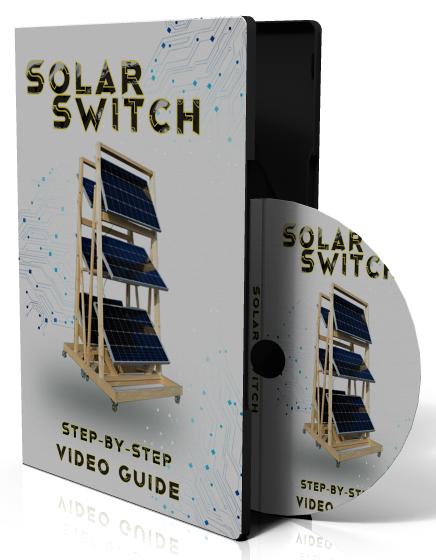
Cut Your Power Bills By 65%!
The simplest, easiest-to-use A to Z blueprint that anyone can follow to make their own cheap green electricity.
What States Allow Off Grid Living in America? Here are Our Top 15 Picks!
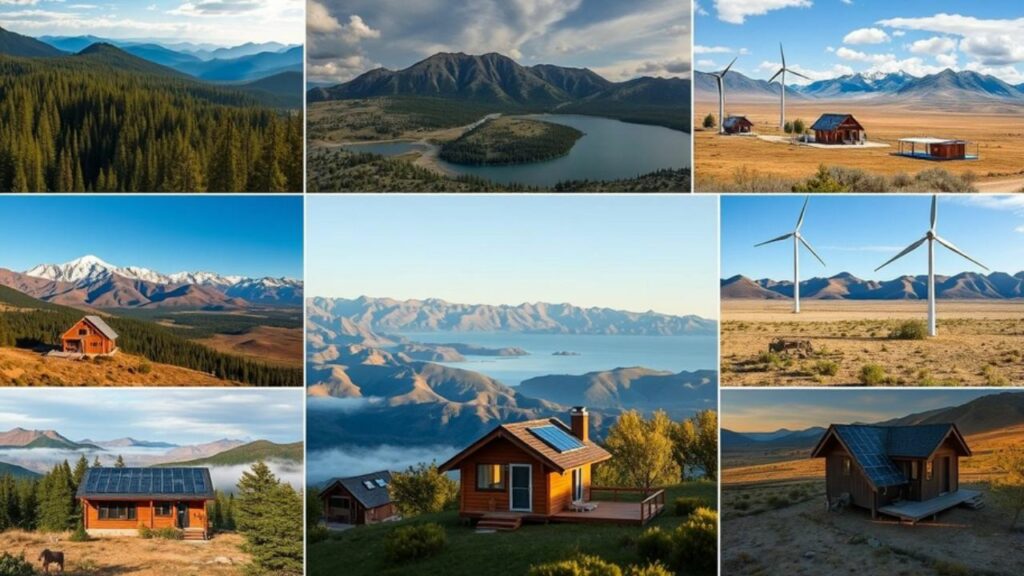
Choosing the best states for off grid living means looking at climate, land, and zoning rules. Each state offers unique advantages for those looking to break free from the grid.
Let’s dive into some of the top states that cater to off-grid enthusiasts, highlighting new perspectives and features that make them stand out.
Alabama
Alabama offers abundant water sources, affordable living and a sense of community for those who seek a simpler, more self-reliant lifestyle.
The state’s mild climate means you can comfortably grow food year-round without the need for expensive heating or cooling systems.
Alabama’s fertile soil and long growing seasons are ideal for those who want to build a sustainable off grid homesteading in the USA.
The state also supports homesteaders with relatively lenient zoning laws, which makes setting up your off-grid life much easier.
Alabama’s blend of natural resources and affordability creates a solid foundation for a self-sufficient lifestyle.
Missouri
Missouri is a gem for off grid living due to its welcoming attitude toward sustainable practices. The state boasts a wealth of natural resources, including rivers, lakes, and forests, giving you the ability to harness nature for both energy and water.
Missouri’s climate provides plenty of rainfall, which makes water collection a breeze.
It’s also home to diverse landscapes, so whether you’re interested in hilly terrain or flat farmland, Missouri offers a variety of land options for those who want to live off the grid.
Additionally, the state has a strong history of farming and self-reliance, making it a perfect environment for community building among like-minded individuals.
Georgia
Georgia’s year-round growing season and mild winters make it a dream for off grid gardeners and farmers.
But beyond its agricultural potential, Georgia offers diverse landscapes — from the coastal plains to the Appalachian Mountains — giving you a wide range of environments to choose from.
Whether you prefer a forested retreat or a more open, flat expanse for a large homestead, Georgia has something for everyone.
The state’s commitment to sustainability and eco-friendly living has been growing, and more rural areas embrace self-sufficiency, making it easier to connect with a community that values off-grid principles.
Georgia’s affordable land prices and temperate climate make it an appealing option for those looking to escape the modern grid while still enjoying a mild, manageable climate.
Tennessee
Tennessee is known for its beautiful landscapes. For off grid living, the state’s lenient building codes and affordable land that truly shine.
The state provides a wide variety of terrains, from rolling hills to fertile valleys, perfect for building a self-sustaining homestead.
Tennessee’s long growing season and mild winters make it possible to grow crops for most of the year, offering plenty of opportunities for those who want to live off the land.
With the freedom to build your off grid home with minimal red tape, Tennessee offers a level of flexibility that many other states can’t match.
The state’s rich history of rural living means you’ll be surrounded by a culture that values independence and self-reliance.
Texas
Texas is famous for its vast landscapes, but it’s also a top destination for off-grid living due to its abundance of affordable land and low taxes.
The state’s sheer size means you can find a variety of climates and terrains, whether you prefer desert, plains, or forested areas.
Texas’s relaxed building codes allow you to design and construct your off grid home with fewer restrictions, giving you more freedom to create a space that meets your needs.
While the state can be hot, it’s ideal for solar energy production, making it easier to harness renewable energy to power your off-grid lifestyle.
Additionally, Texas has a strong culture of independence, making it a natural fit for those who want to live off the grid while enjoying the freedom to build a self-sufficient life on their terms.
Louisiana
With access to fertile soil and a warm, humid climate, this state makes it easy to cultivate a variety of crops, fish, and even forage for food in nature.
The many rivers and bayous offer natural water sources for irrigation and personal use, and the coastal regions present a unique opportunity for those interested in harnessing wind or tidal energy.
Additionally, Louisiana’s strong sense of community and deep-rooted culture can offer off-gridders a supportive environment, whether you’re in a rural or more remote location.
Indiana
In Indiana, off-grid living combines affordability with practicality. Land is reasonably priced and abundant, especially in the rural areas, making it easier to establish a homestead.
Indiana’s rich agricultural history means the soil is highly fertile, perfect for growing your own food, raising livestock, or starting a small-scale farm.
The state’s off grid living zoning requirements are also quite favorable for off grid projects, giving residents the flexibility to build sustainable homes and use alternative energy sources.
Indiana’s climate, with its four distinct seasons, provides an excellent opportunity for diverse gardening methods and self-sufficiency throughout the year.
Oregon
Oregon’s long growing season is a gardener’s dream, allowing you to cultivate a wide variety of crops, from fruits and vegetables to herbs and medicinal plants.
What sets Oregon apart is its progressive attitude toward alternative living, including more lenient laws on off grid living permits and sustainable building practices.
Whether you’re interested in solar power, wind energy, or hydroelectricity from one of Oregon’s many rivers, you’ll find the state’s natural environment conducive to experimenting with different forms of renewable energy.
Oregon’s strong environmental consciousness means that off-grid communities here are not only accepted but often embraced.
Colorado
For those who love the outdoors, Colorado offers a unique blend of adventure and self-sufficiency.
The state’s rugged mountains, vast forests, and stunning natural beauty make it a popular destination for off grid living.
The high altitude and clean mountain air provide a refreshing backdrop for anyone looking to disconnect from the modern world and embrace a simpler, self-sufficient lifestyle.
Colorado also offers plenty of solar energy potential, making it easy to generate power even in remote areas.
The state’s strong outdoor culture means that hunting, fishing, and foraging are all viable options for supplementing your food supply, allowing you to live off the land in harmony with nature.
Maine
Maine is often described as one of the best states for off grid living for those seeking solitude and a deeper connection with nature.
The state’s vast wilderness and low population density make it an excellent choice for off grid living.
With its dense forests, freshwater lakes, and abundant wildlife, Maine offers countless opportunities for sustainable living, from foraging and fishing to logging for firewood.
The state’s long, cold winters also encourage creative solutions for heating and insulation, making it a great place to explore passive solar design or wood-burning stoves.
Maine’s peaceful atmosphere, paired with its strong sense of independence, makes it a place where you can truly carve out your own off grid paradise while still being within reach of small, close-knit communities for support.
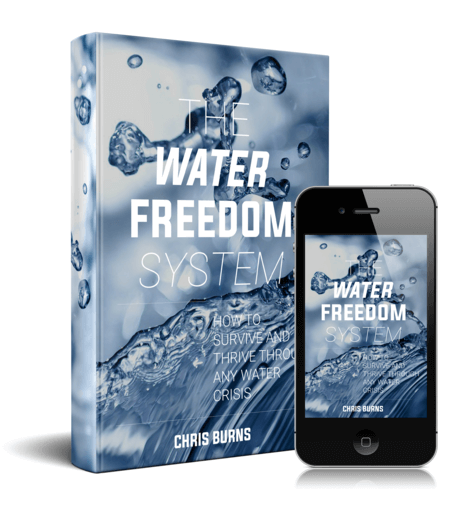
Create Your Own Water Supply!
EXCLUSIVE step-by-step guide showing you EXACTLY how to create your own “home oasis” TODAY and how to survive any tough century long drought!
Florida
Florida is a fantastic option for off grid living due to its abundant sunshine, which makes it ideal for solar energy production.
The state’s warm climate allows for year-round gardening, enabling you to grow your own food and be more self-sufficient.
Florida also has relatively affordable land compared to other coastal states, especially in rural areas.
Additionally, its extensive coastline and freshwater sources provide opportunities for those interested in fishing or aquaculture to support a sustainable lifestyle.
Idaho
Idaho’s rugged terrain and breathtaking landscapes offer privacy and a peaceful environment for those seeking solitude in their off grid endeavors.
The state is known for its lax zoning laws, making it easier to establish an off-grid home without facing significant regulatory hurdles.
Idaho also boasts a diverse climate, allowing for different types of farming and livestock raising depending on the region.
The state’s abundant forests provide access to natural resources like timber and fresh water, giving off-grid homesteaders a wealth of tools to build and sustain their homes.
Idaho is also ideal for those who enjoy outdoor activities, with hiking, hunting, and fishing opportunities at every turn.
Wyoming
Wyoming, with its wide-open spaces and low population density, is a haven for those who crave complete independence.
The state’s vast expanses mean you’ll have plenty of land to spread out and build your homestead.
However, Wyoming’s semi-arid climate, with only 13 inches of rain per year, means securing water is a top priority.
Off-gridders need to be well-versed in water rights and may want to consider drilling wells or installing rainwater harvesting systems.
Wyoming also offers access to abundant natural resources like wind for energy generation, and its open range is perfect for raising livestock.
The state’s remote nature provides a deep sense of solitude for those who truly want to disconnect from modern society.
Montana
Montana is known for its sweeping landscapes and big skies, offering plenty of space for those who want to live off the grid.
The state’s open land is ideal for homesteading, ranching, or farming, with fertile soil in certain regions.
Although Montana receives around 13 inches of rainfall annually, much of the water comes from snowmelt in the mountains, making water conservation and management important.
The state’s zoning laws are generally off grid friendly, especially in rural areas, allowing for more freedom in how you use your property.
Montana’s harsh winters, however, mean off-gridders need to be prepared with proper insulation, heating sources, and food storage to survive the colder months.
New Mexico
New Mexico is a gem for off grid living, with its stunning desert landscapes and temperate climate.
The state’s long growing season allows for a variety of crops, and the open land means you can easily find affordable plots to establish your off-grid homestead.
Solar power is particularly effective here, given New Mexico’s year-round sunshine.
For those who value cultural richness, New Mexico offers a vibrant mix of Native American, Hispanic, and Anglo influences, making it a unique place to live.
However, water is a precious resource in this arid state, so implementing water conservation systems, like rainwater collection or greywater recycling, is essential for long-term sustainability.
Additionally, the state’s relaxed zoning laws make it a welcoming environment for those pursuing an off grid lifestyle.

Cut Your Power Bills By 65%!
The simplest, easiest-to-use A to Z blueprint that anyone can follow to make their own cheap green electricity.
Legal Challenges of Living Off the Grid
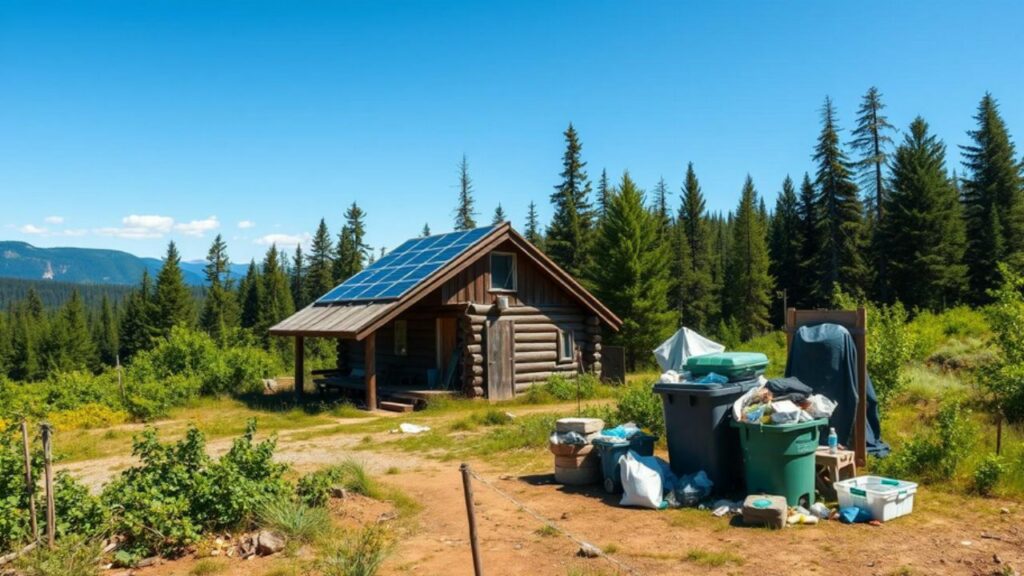
Living off the grid offers a sense of freedom and independence, but it’s not without its obstacles. One of the biggest hurdles is navigating regulations, which can significantly impact your ability to live sustainably.
These off grid living laws by state often vary, and even by county, making it crucial to research thoroughly before embarking on your off-grid journey.
One of the toughest legal challenges for off grid enthusiasts is finding a place where they can build without heavy regulations.
Some areas impose strict zoning laws and require permits for even the simplest structures.
These regulations can stifle creativity and limit how you design your off grid home.
For example, in states like California, high-density urban areas often have stringent building codes aimed at safety, which can complicate efforts to incorporate eco-friendly systems like solar panels or rainwater catchment.
On the flip side, there are states like Colorado, particularly in more rural counties, that offer much more freedom.
Some counties have virtually no building codes, which allows off-grid builders to experiment with sustainable designs like tiny homes, earthships, or straw-bale houses without having to worry about constant inspections or permits.
In these areas, your imagination is the only limit.
However, having fewer restrictions doesn’t mean less responsibility.
The lack of regulations can sometimes mean there’s little oversight, which could affect the safety and longevity of your build. Balancing freedom and safety is key to creating a home that stands the test of time.
Financial Considerations for Off Grid Living
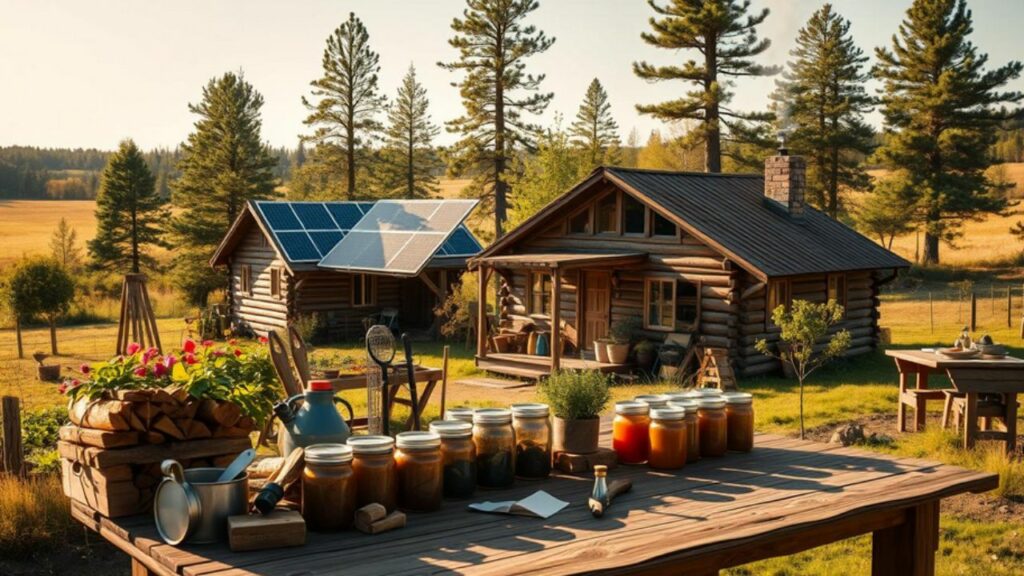
When embarking on an off grid lifestyle, it’s important to grasp the financial aspects involved, especially since costs can vary dramatically depending on where you choose to settle.
Living off-grid means you’re not just paying for land, but also the infrastructure to sustain your independent lifestyle — like energy, water, and waste management systems.
Financial planning is key to ensuring long-term success and comfort in your new self-sufficient home.
Cost of Living and Property Taxes
One of the biggest factors to consider is the cost of living, which can vary significantly from state to state. Property taxes, in particular, can make or break your budget.
Take Tennessee, for example. The state’s abundance of rain (around 52 inches per year) makes it an ideal spot for growing your own food and reducing irrigation costs. This natural advantage can lower your overall expenses in the long run, especially if you plan on gardening or raising livestock.
Alabama is another state worth considering.
Not only does it have some of the lowest property taxes in the country, but it also has relaxed building codes. This can make setting up your off-grid home cheaper and less bureaucratic.
Plus, if you’re thinking about solar power, Alabama’s sunny climate makes it a viable option.
Even though installing solar panels might require a significant upfront investment (ranging from $2,000 to $20,000), over time, the savings from energy independence often outweigh the initial costs
Hidden Costs and Long-Term Savings
While the appeal of low property taxes and land prices is strong, there are hidden costs to consider when transitioning to off grid living.
For example, you might need to invest in water collection systems like rain barrels or a well, composting toilets, or greywater systems to handle waste.
Many of these are one-time expenses that could seem costly upfront but pay off in the long run. Over time, the savings from not relying on municipal utilities can offset these initial investments.
Maintenance is another often-overlooked expense.
Solar panels, batteries, and even off-grid appliances need upkeep, so it’s important to set aside funds for repairs or replacements down the line.
In the end, though, the financial independence that comes from producing your own energy, growing your own food, and managing your waste can lead to a life that’s not just self-sufficient, but also more affordable in the long term.
Choosing the right state for off-grid living requires a balance between upfront costs and long-term sustainability, considering factors like weather, property taxes, and the availability of natural resources.
States like Tennessee, Alabama, Texas, and Missouri each offer unique financial advantages, and with the right planning, your dream of living off-grid can become a financially viable reality.
Future of Off-Grid Living in the USA
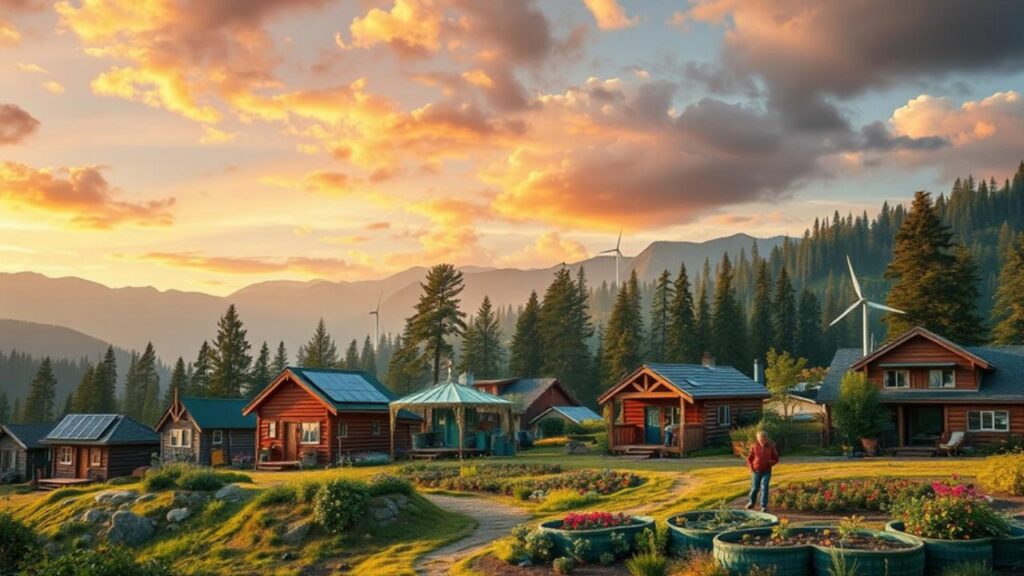
Off grid living is rapidly evolving as more people seek a lifestyle that prioritizes self-sufficiency, sustainability, and a reduced environmental footprint. As of now, an estimated 250,000 people in the U.S. are embracing this way of life.
One of the most significant factors helping the off grid movement grow is government support in the form of incentives and tax breaks.
Many states offer financial incentives for using renewable energy, such as solar panels or wind turbines, while also providing grants for eco-friendly projects.
In Texas, for instance, homeowners can take advantage of property tax exemptions for installing solar panels, making the transition to an off grid lifestyle more affordable.
Federal programs also offer rebates and tax credits for those adopting renewable energy sources. These incentives can significantly reduce upfront costs, enabling more people to consider off grid living as a realistic option.
Conclusion
Starting off-grid living can be incredibly rewarding. It brings self-sufficiency and a closer bond with nature. Knowing the best states for off-grid living is key, as each state has its own perks and hurdles.
Think about the cost of living too and when planning your off grid journey, use every available resources available. From communities to self sufficient guides, there’s a lot to help you.
With the right planning, your off-grid dream can become a reality!

